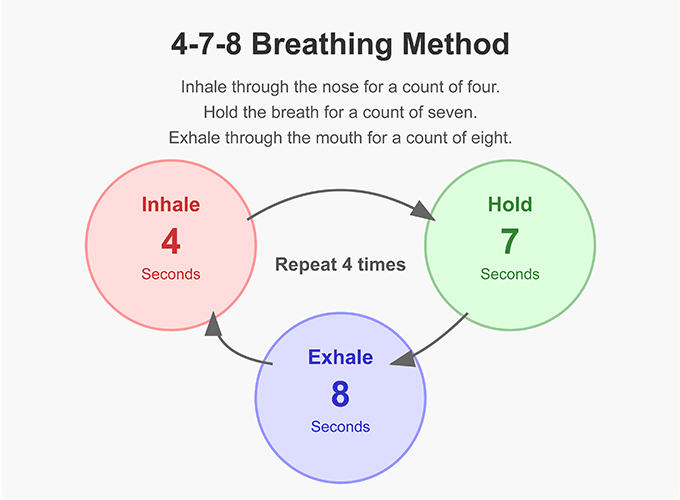A growing number of people are turning to the 4-7-8 breathing technique, a method popularized by Harvard-trained physician Dr. Andrew Weil, to manage stress and promote relaxation. This simple practice—inhaling for 4 seconds, holding the breath for 7 seconds, and exhaling for 8 seconds—claims to “reset” your mind and body by activating the parasympathetic nervous system. But how does it work, and is there science to back it up? Let’s explore the method, its benefits, and how to do it right.
What Is the 4-7-8 Breathing Technique?
The 4-7-8 method is a rhythmic breathing exercise designed to calm the body’s stress response. It taps into the parasympathetic nervous system, often called the “rest and digest” mode, which counteracts the “fight or flight” response driven by the sympathetic nervous system. Dr. Weil, who has promoted this technique for years, describes it as a natural tranquilizer for the nervous system that can be done anywhere, anytime.
The Science Behind the Numbers
The specific 4-7-8 rhythm isn’t random—it’s rooted in physiological principles that promote relaxation. Here’s what the science says:
- Extended Exhalation Activates Relaxation
The 8-second exhale is key. Research shows that prolonging exhalation stimulates the parasympathetic nervous system, which lowers heart rate and blood pressure while easing muscle tension. A 2018 study in Frontiers in Psychology found that slow, controlled exhalation can reduce stress markers in as little as two minutes. - Holding Your Breath Triggers Calm
The 7-second breath hold slightly increases carbon dioxide levels in the body, which can stimulate the brain stem to send calming signals. This mimics the body’s natural relaxation response, as noted in a 2022 article from Othership.us on deep breathing and the parasympathetic nervous system. - Rhythmic Breathing Resets the Brain
Anxiety often leads to erratic breathing, which can worsen stress. The 4-7-8 rhythm helps break this cycle by creating a predictable pattern, allowing the brain to re-establish a calm physiological state. A study published in Applied Psychophysiology and Biofeedback (accessed via Springer) highlights that slow, rhythmic breathing enhances heart rate variability, a marker of reduced stress.
How to Practice the 4-7-8 Breathing Technique
Ready to try it? Follow these steps for a 2-5 minute session, ideally repeated once daily:
- Sit or lie down in a comfortable position, keeping your back straight.
- Place the tip of your tongue against the ridge behind your upper front teeth.
- Inhale quietly through your nose for 4 seconds.
- Hold your breath for 7 seconds.
- Exhale slowly through your mouth for 8 seconds, making a soft “whoosh” sound.
- Repeat the cycle 4-5 times, but stop if you feel lightheaded.
Dr. Weil recommends starting with just a few cycles and gradually increasing as you get comfortable. He advises practicing twice a day for best results, such as before bed to improve sleep or during stressful moments to regain calm.
Benefits and Limitations
The 4-7-8 method is praised for its simplicity and effectiveness in managing mild to moderate anxiety, curbing food cravings, and aiding sleep. Dr. Weil’s website (drweil.com, December 4, 2024) notes that it’s a tool you can always carry with you—no equipment needed. However, it’s not a cure-all. For severe anxiety or chronic stress, it’s best used alongside other strategies like therapy or exercise. Beginners may also feel dizzy at first, so it’s wise to start slowly.
Final Thoughts
The 4-7-8 breathing technique offers a science-backed way to hit the reset button on your mind and body. By leveraging the power of controlled breathing, it helps activate your body’s natural relaxation response, making it a handy tool for stressful moments. Give it a try, but remember: consistency is key to reaping the benefits.

